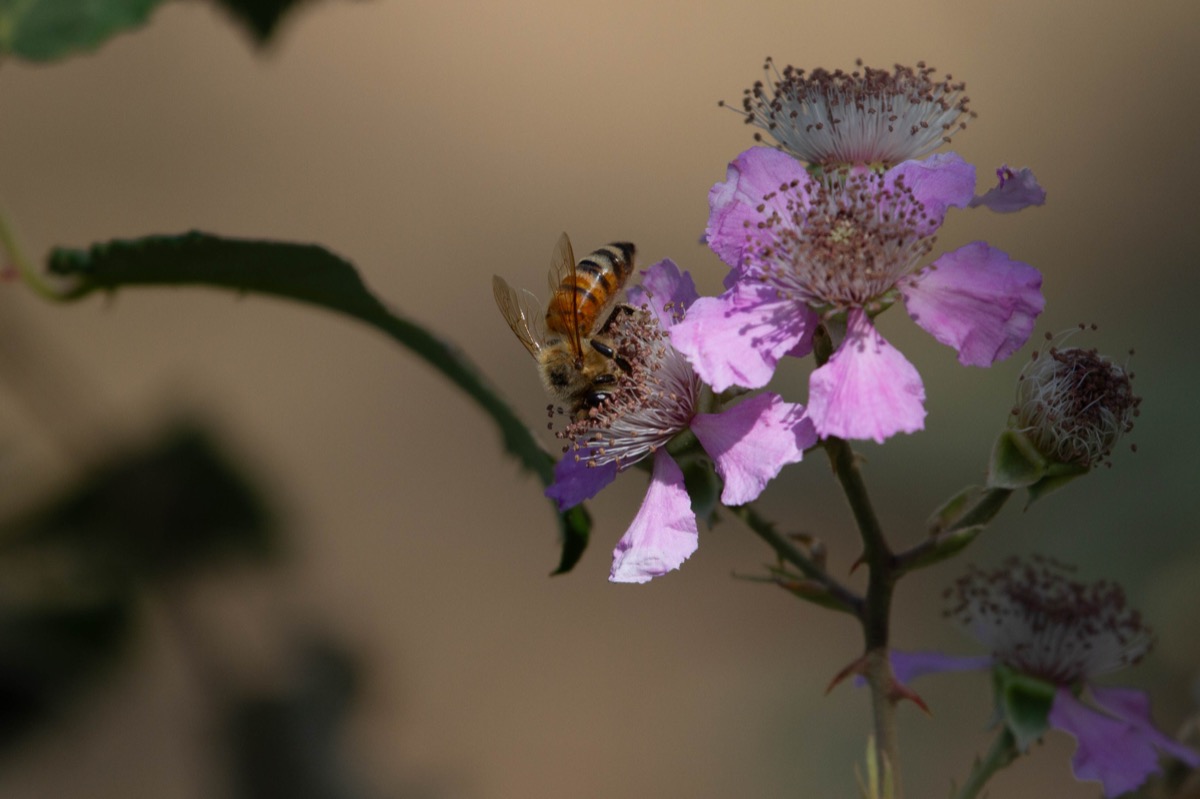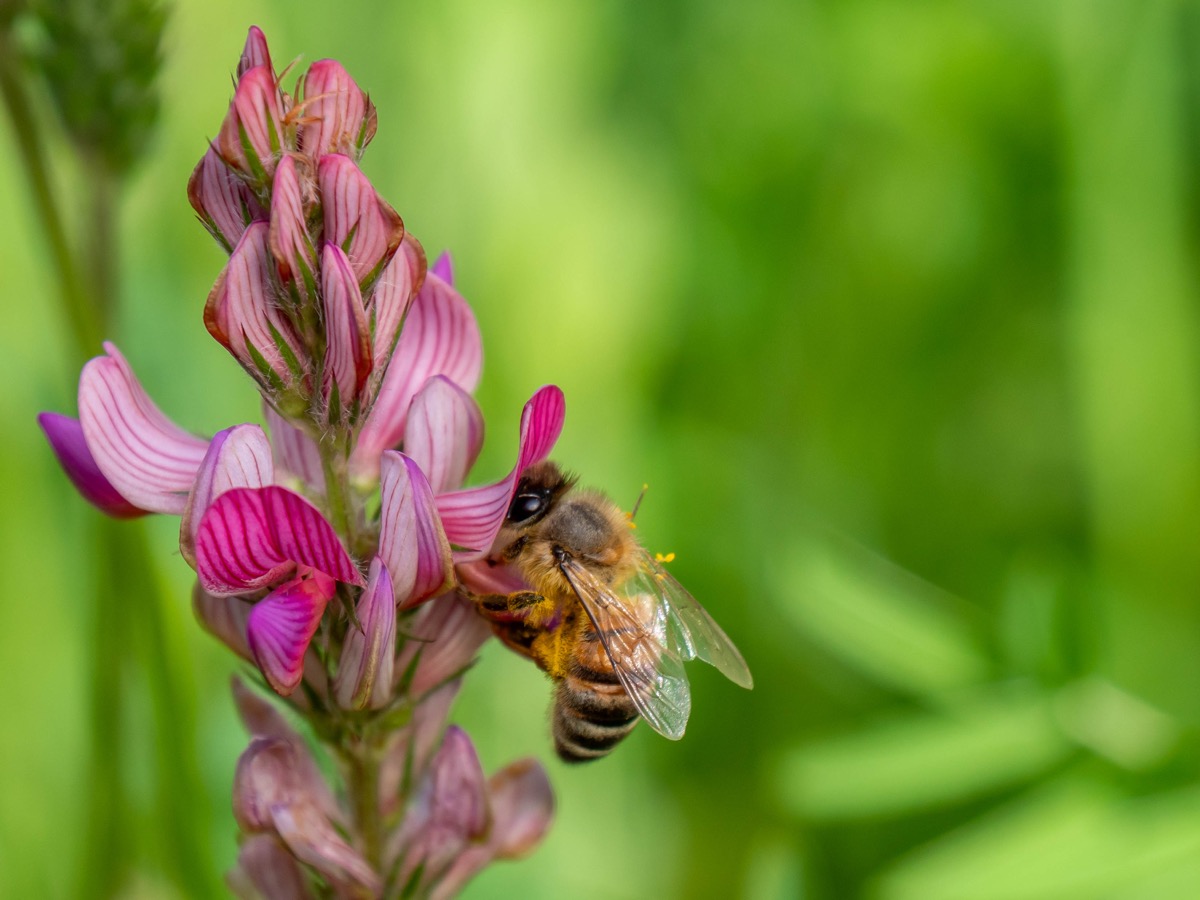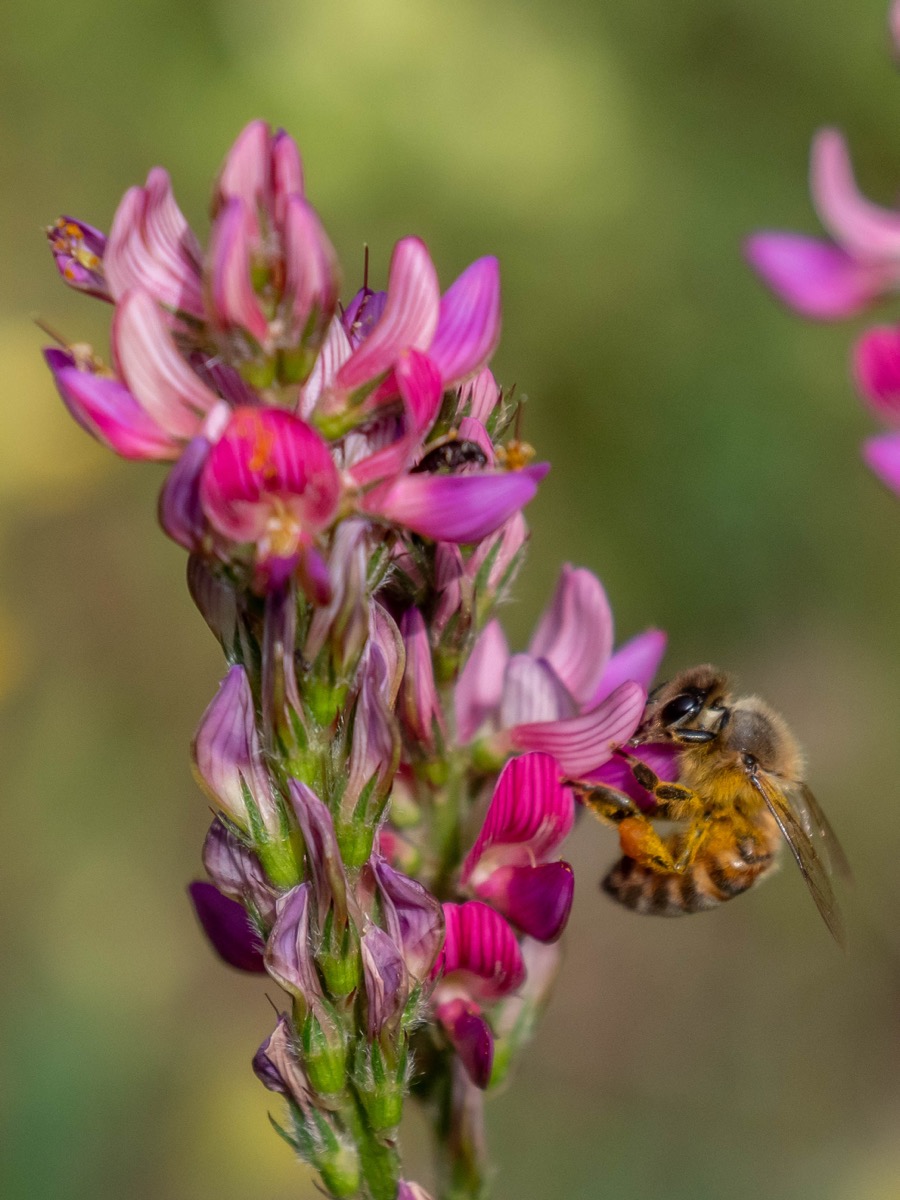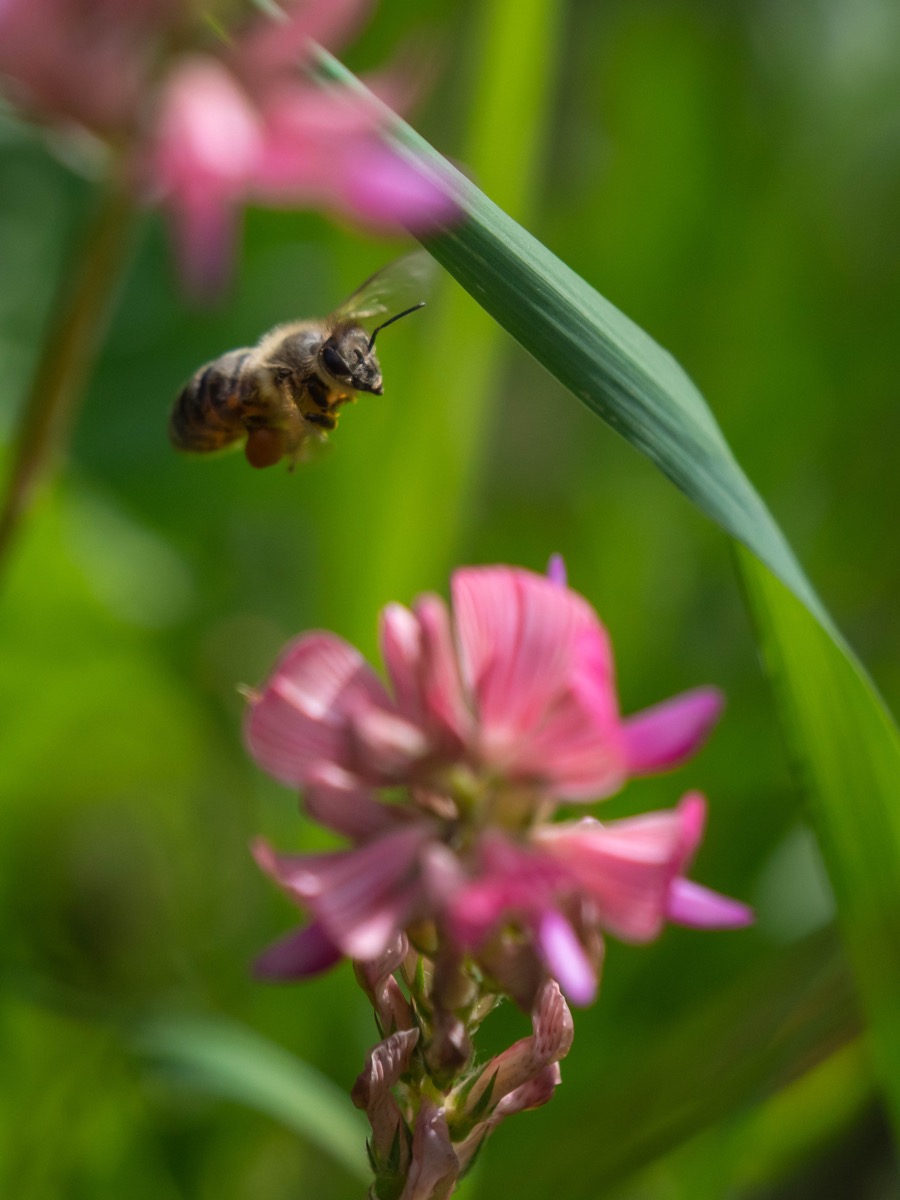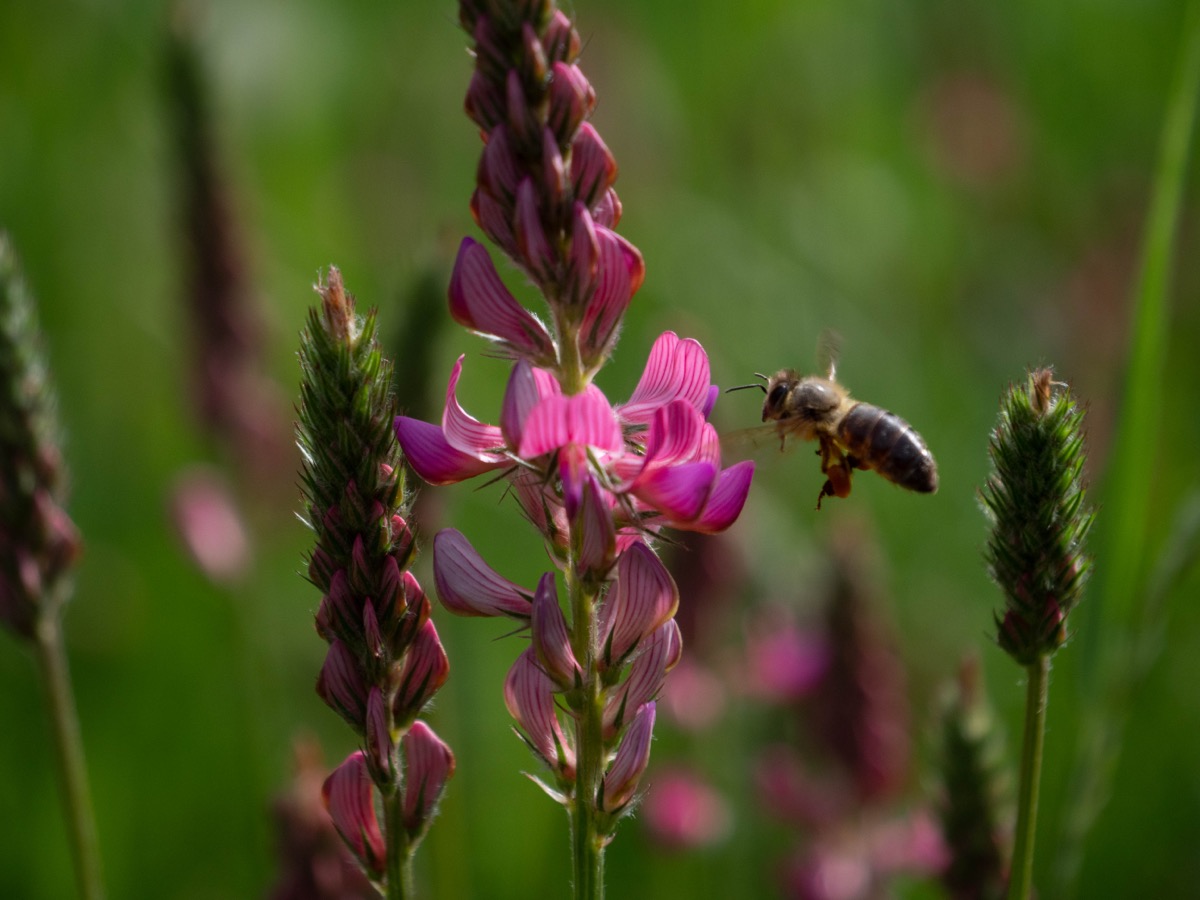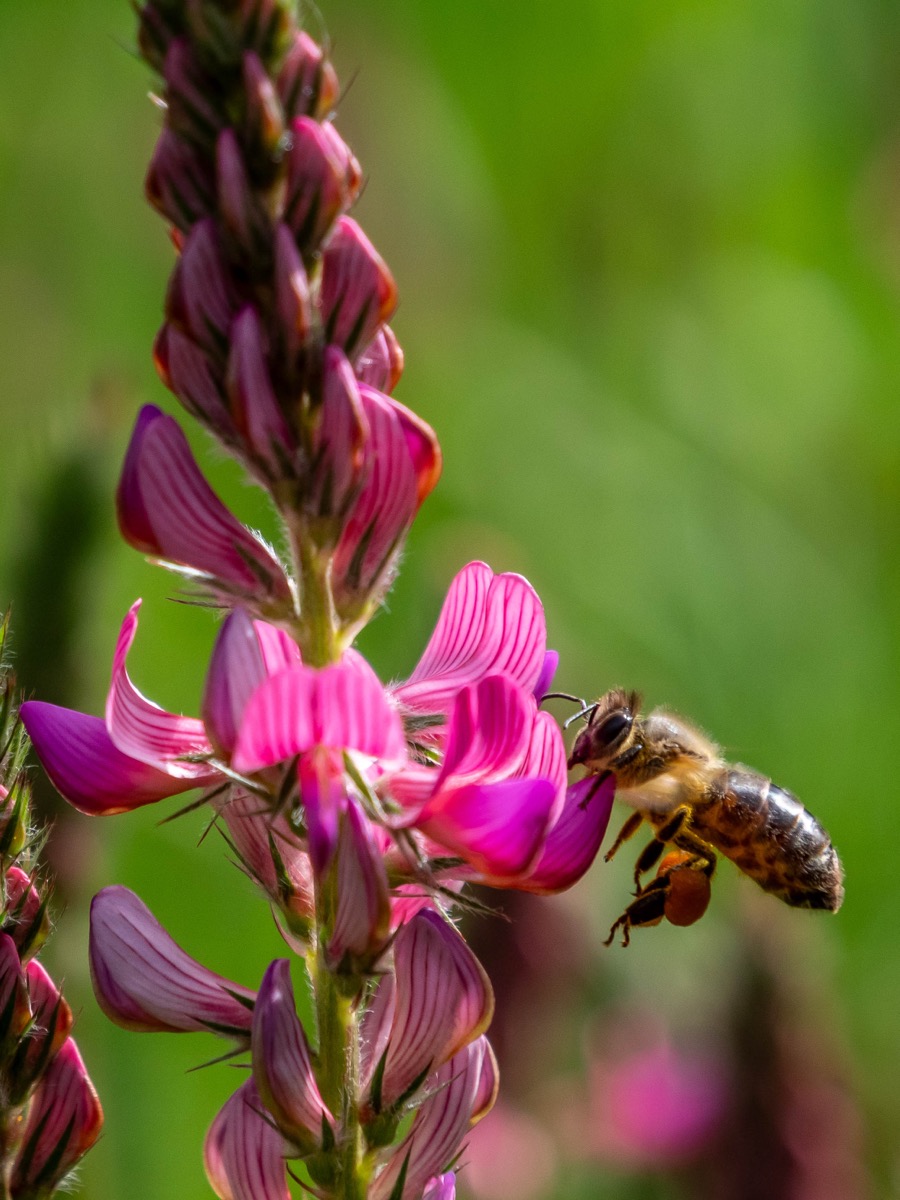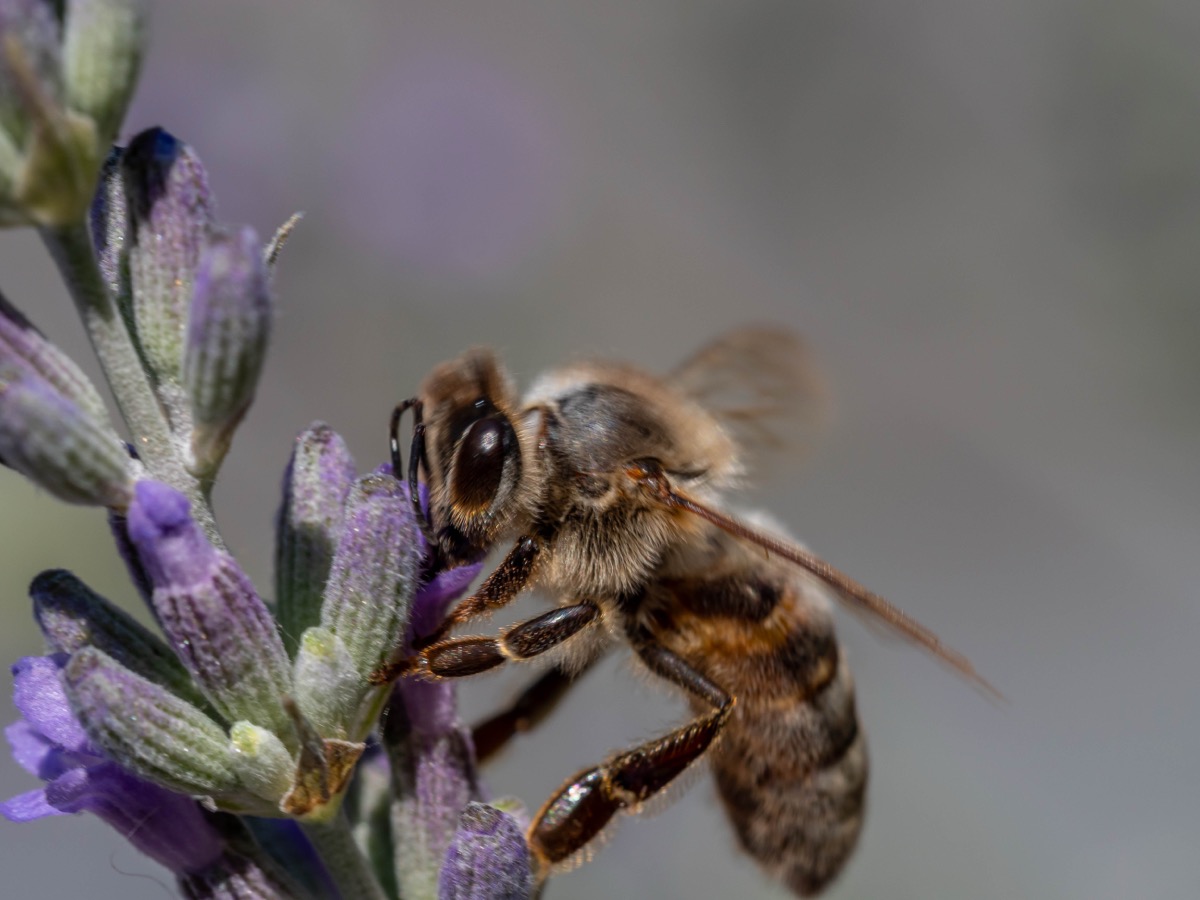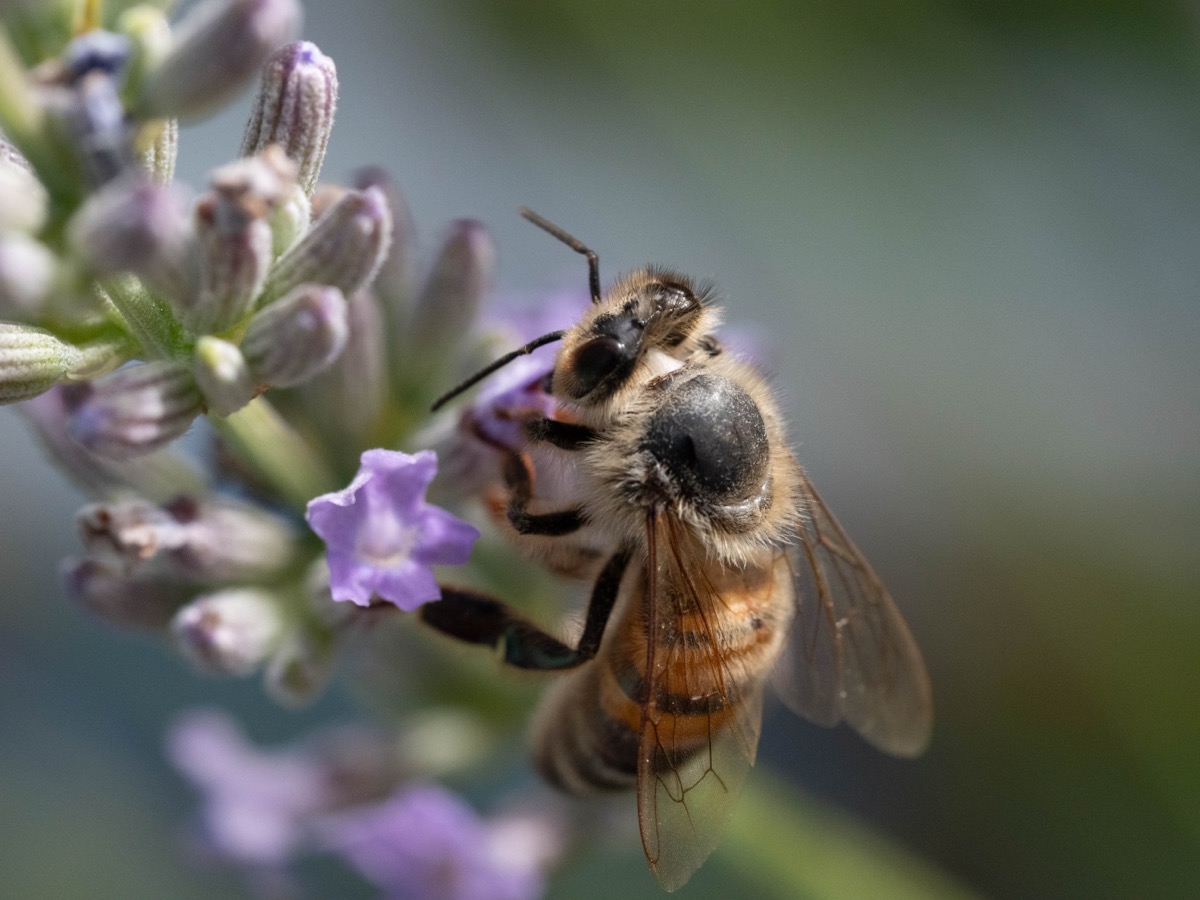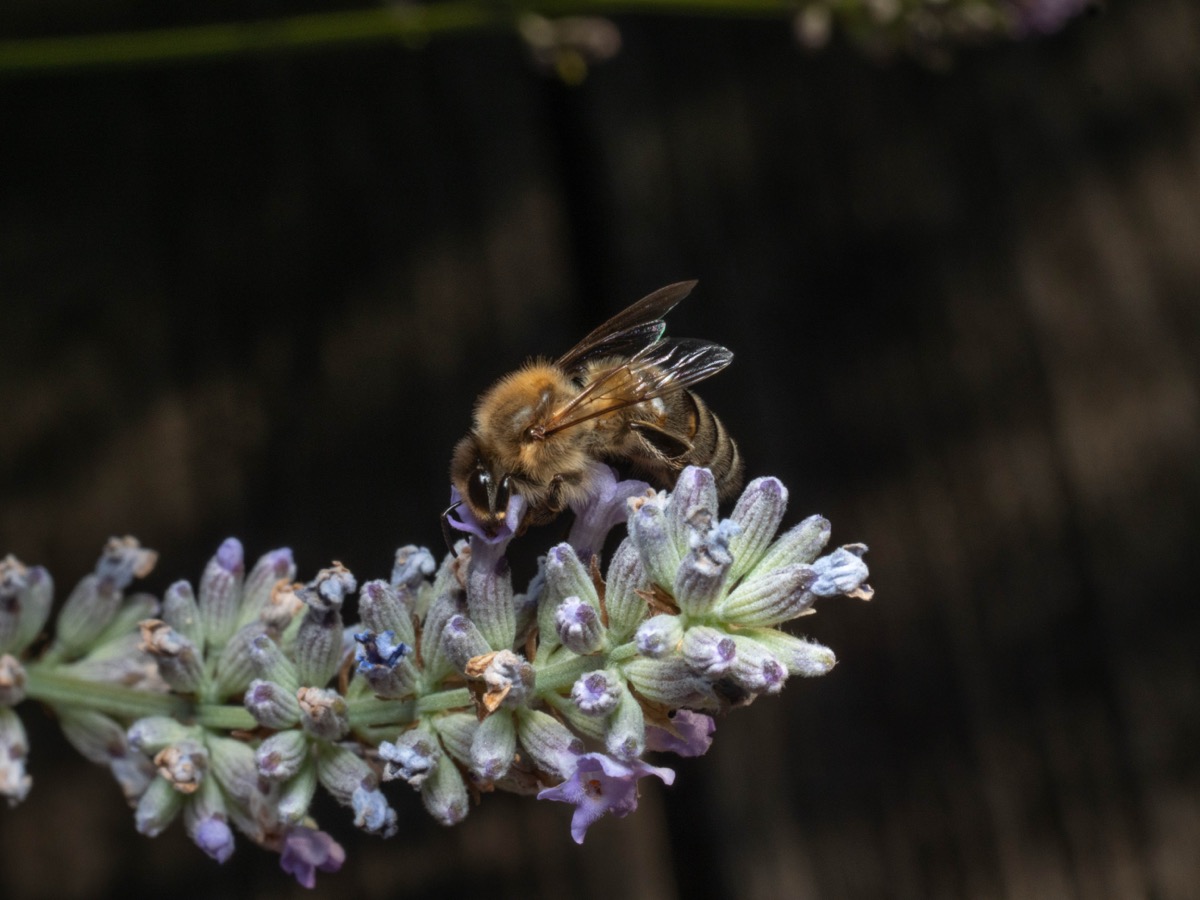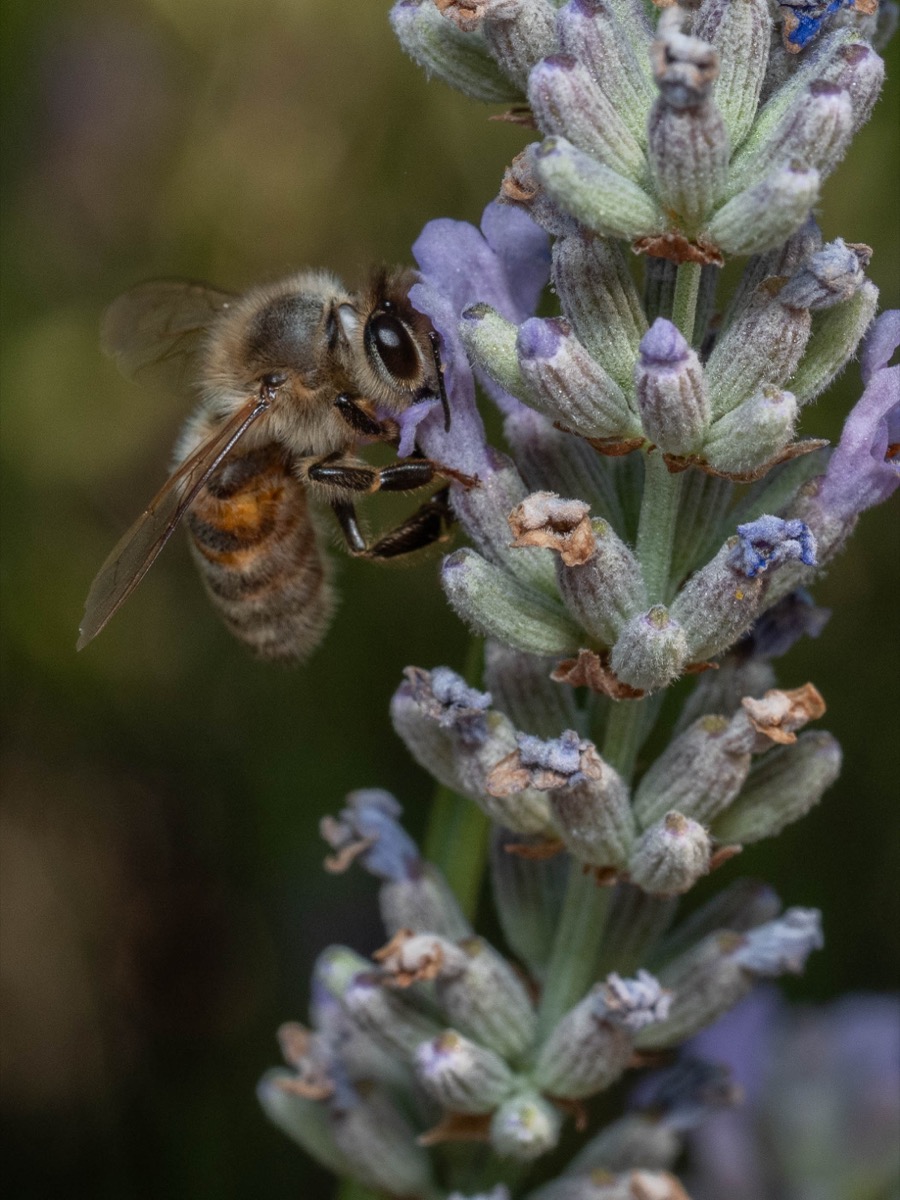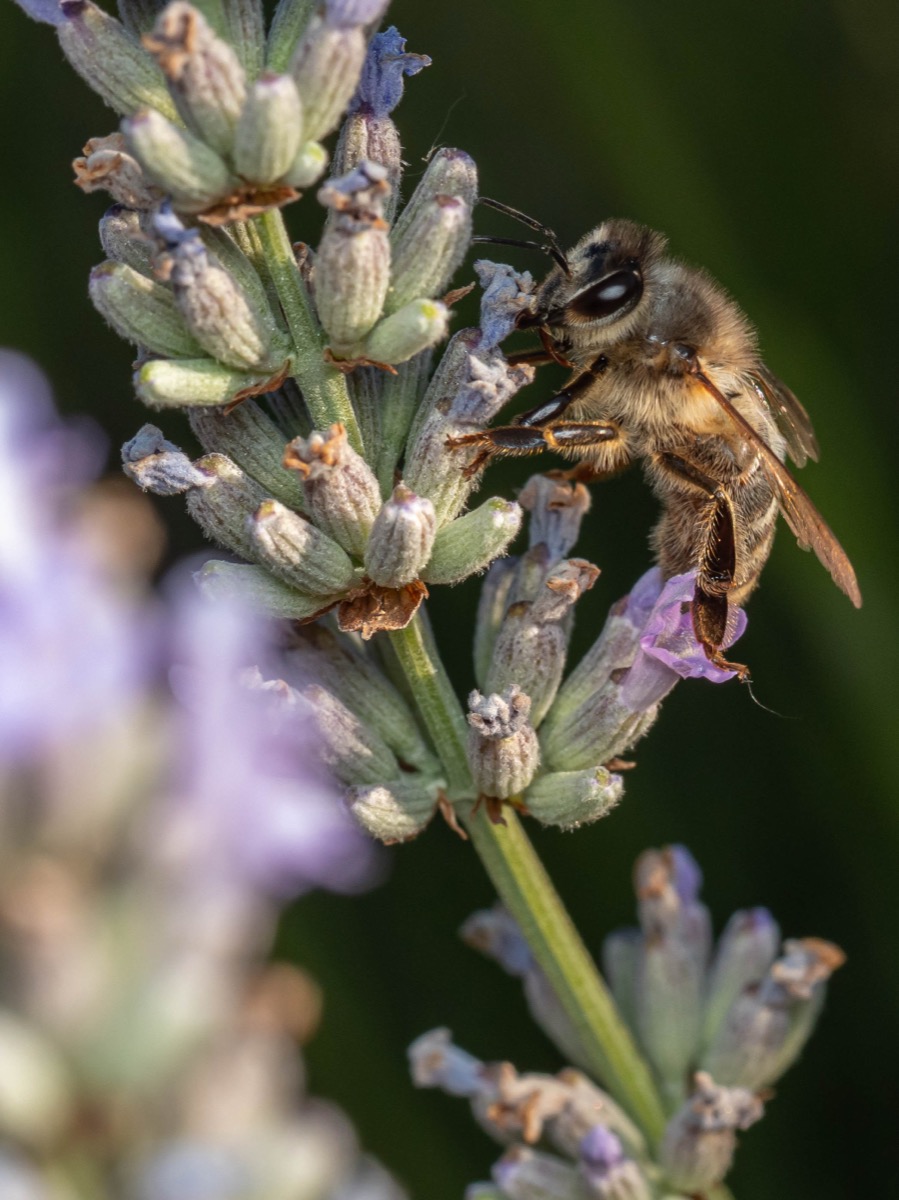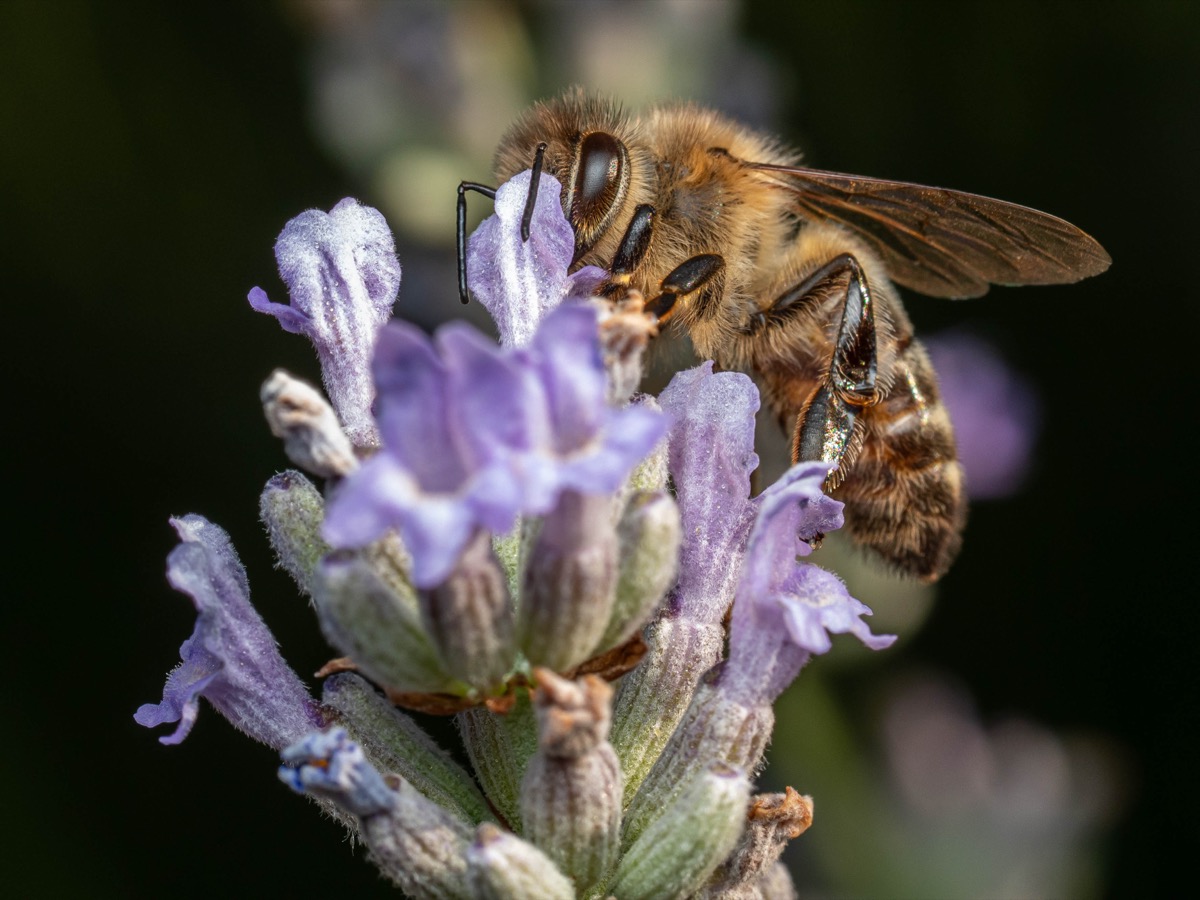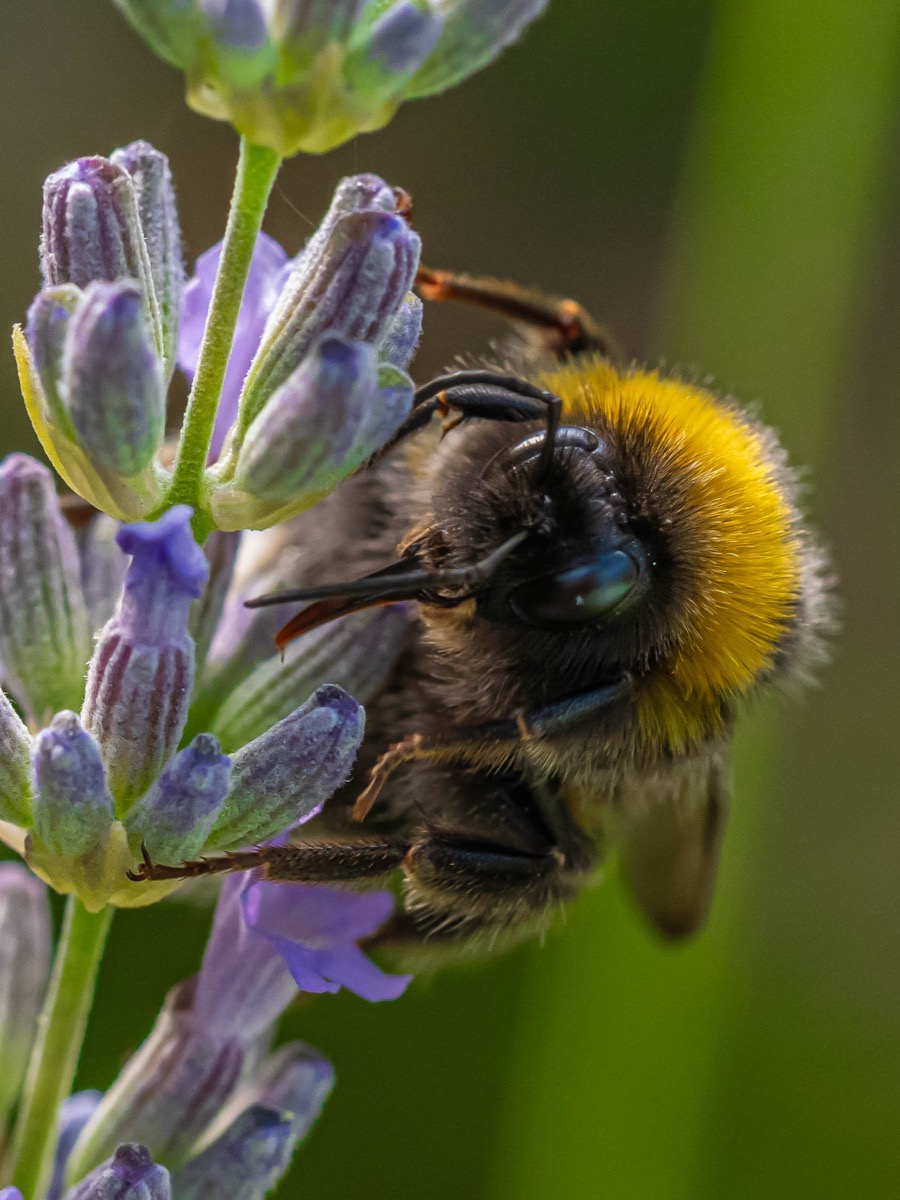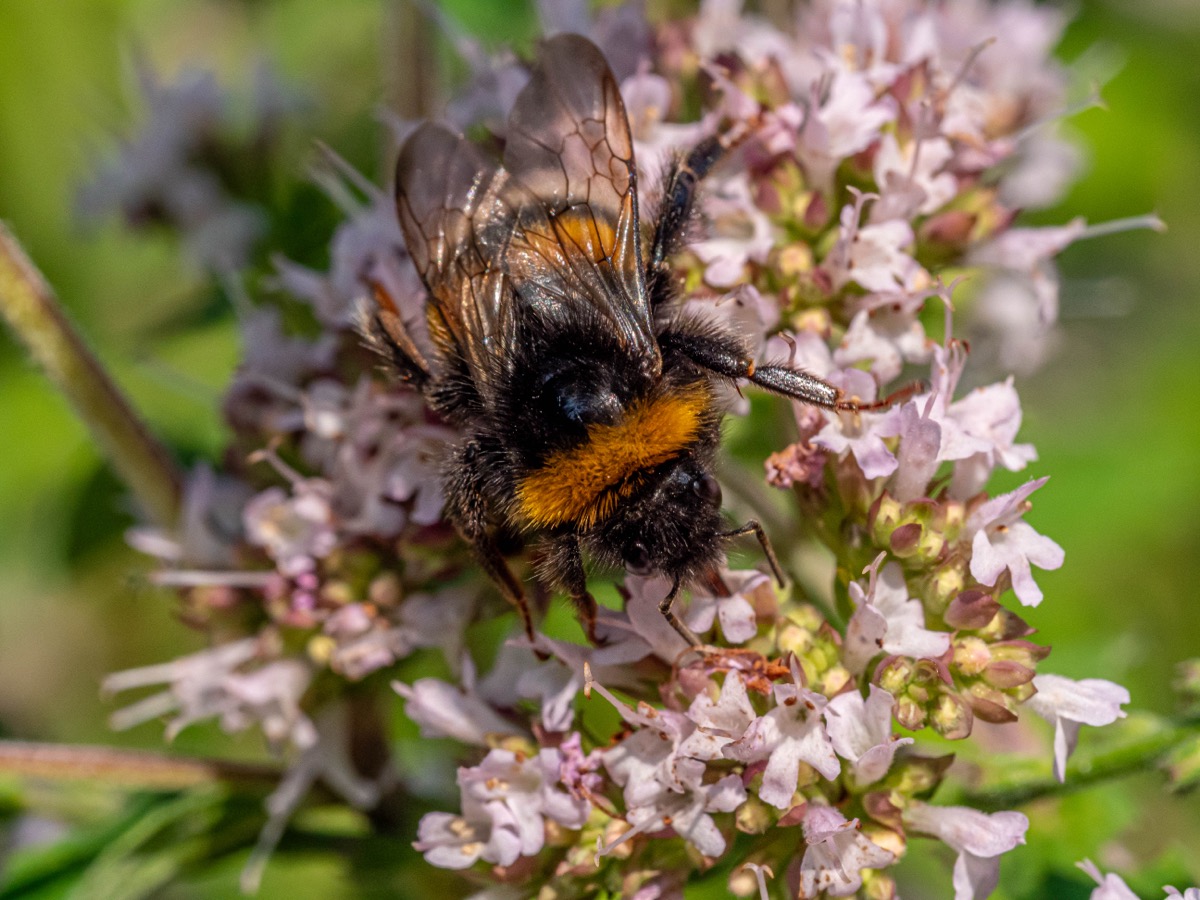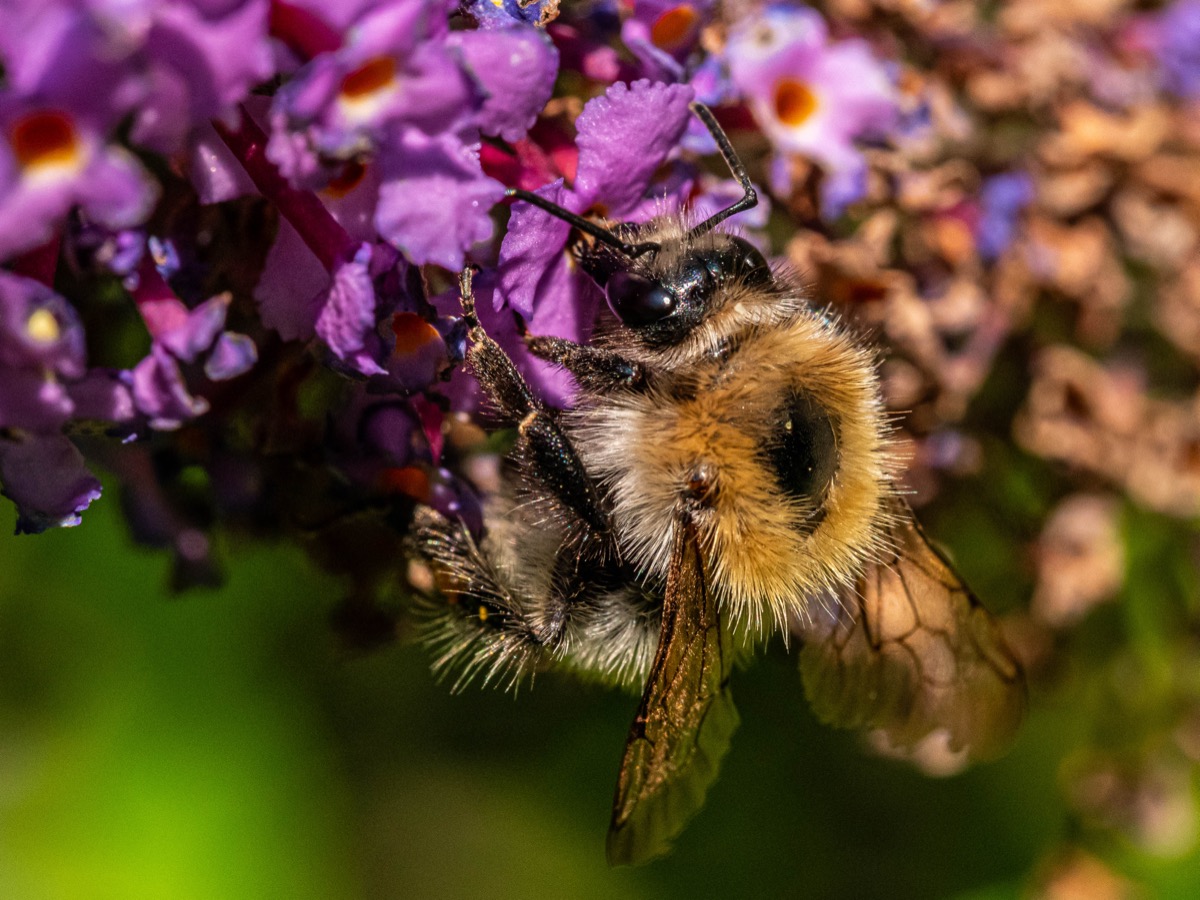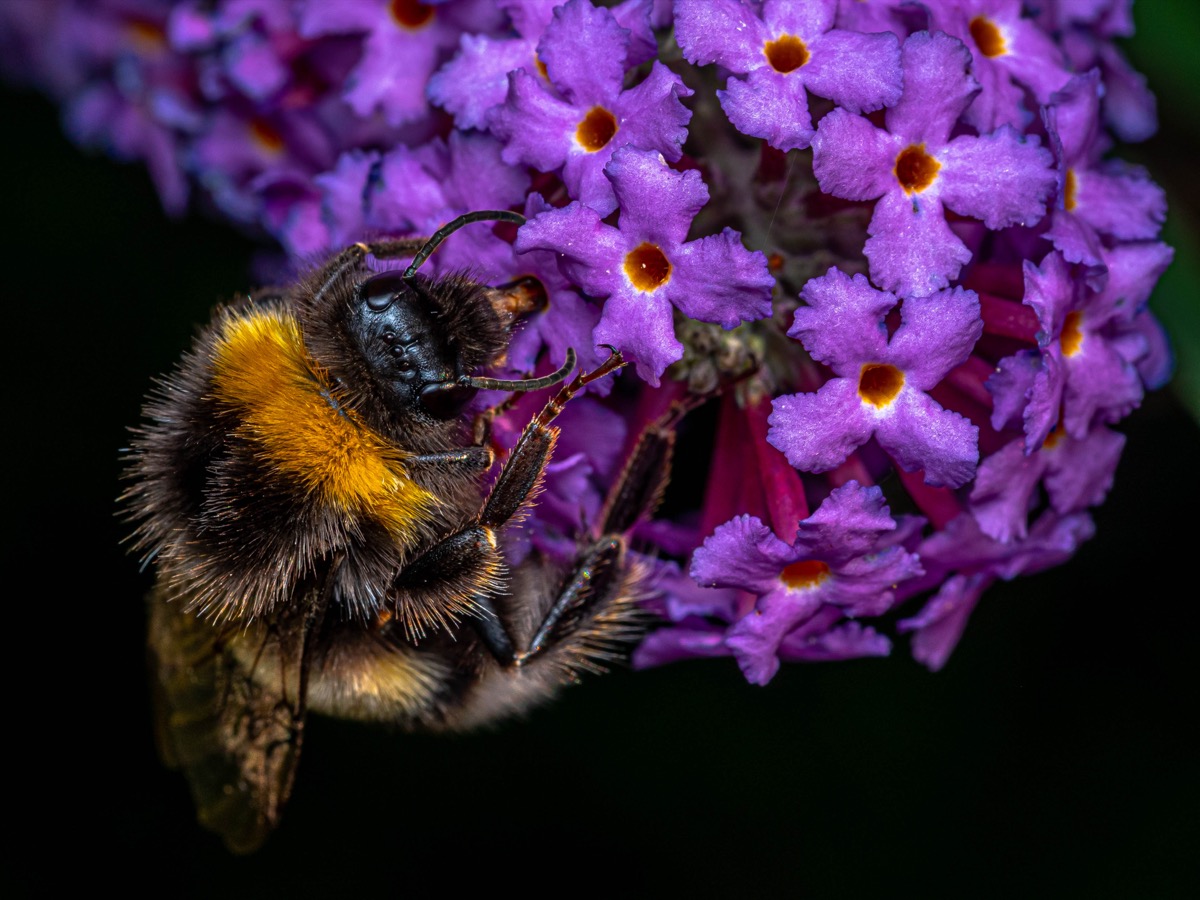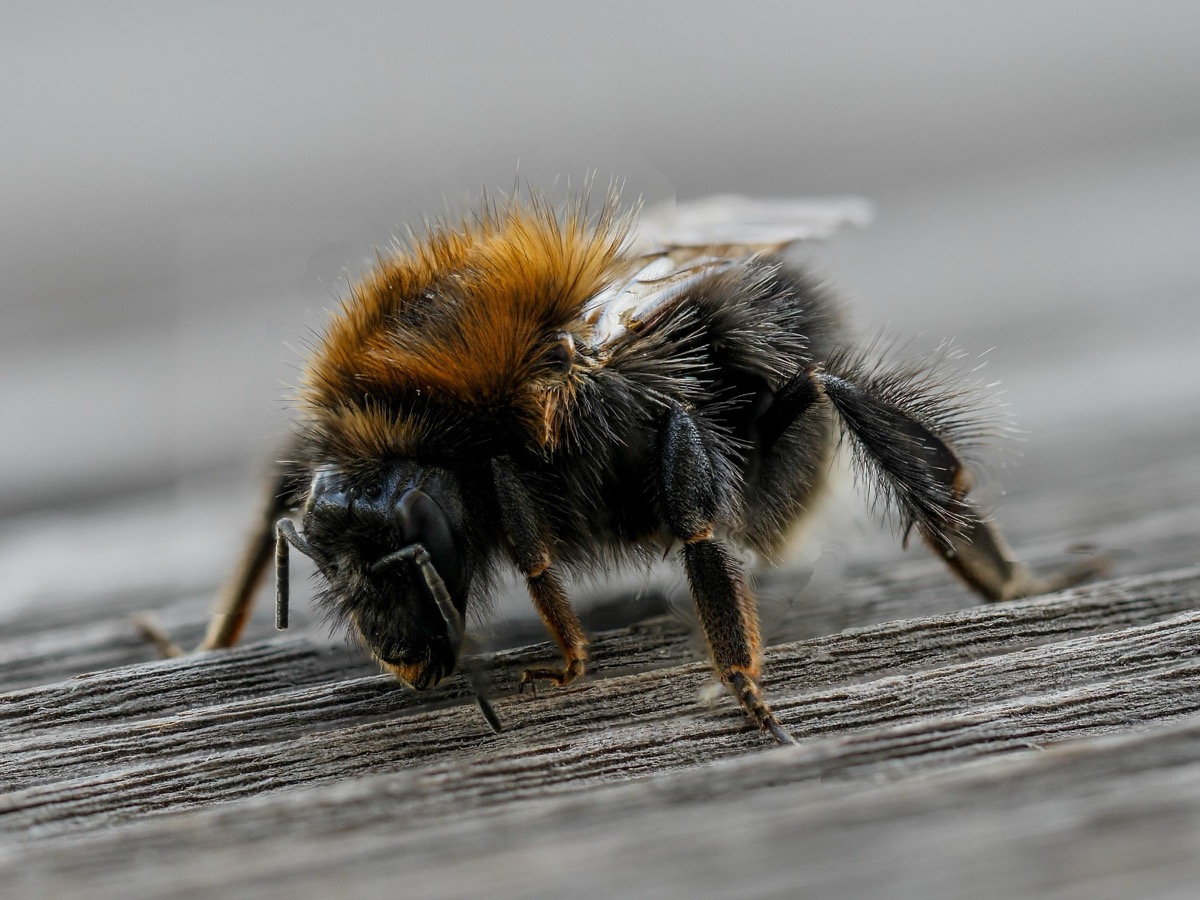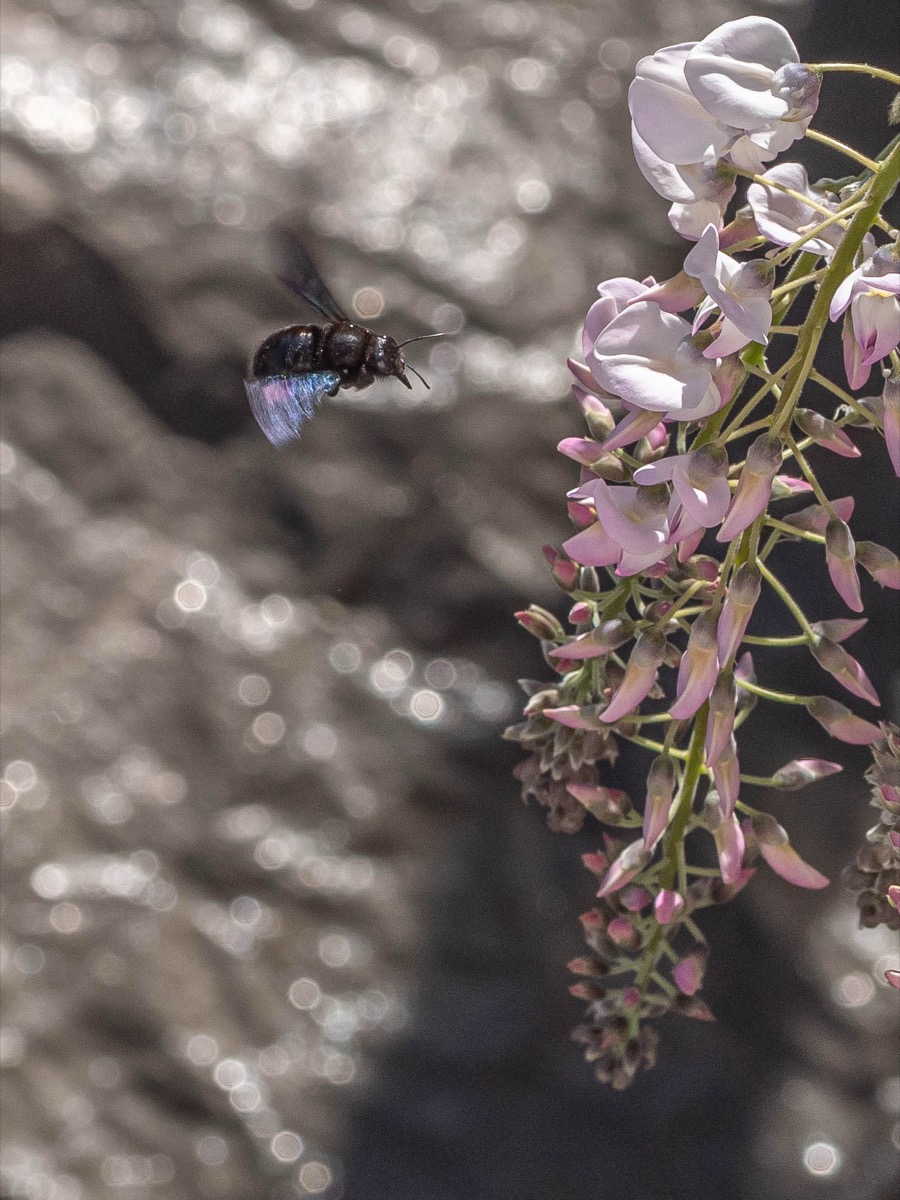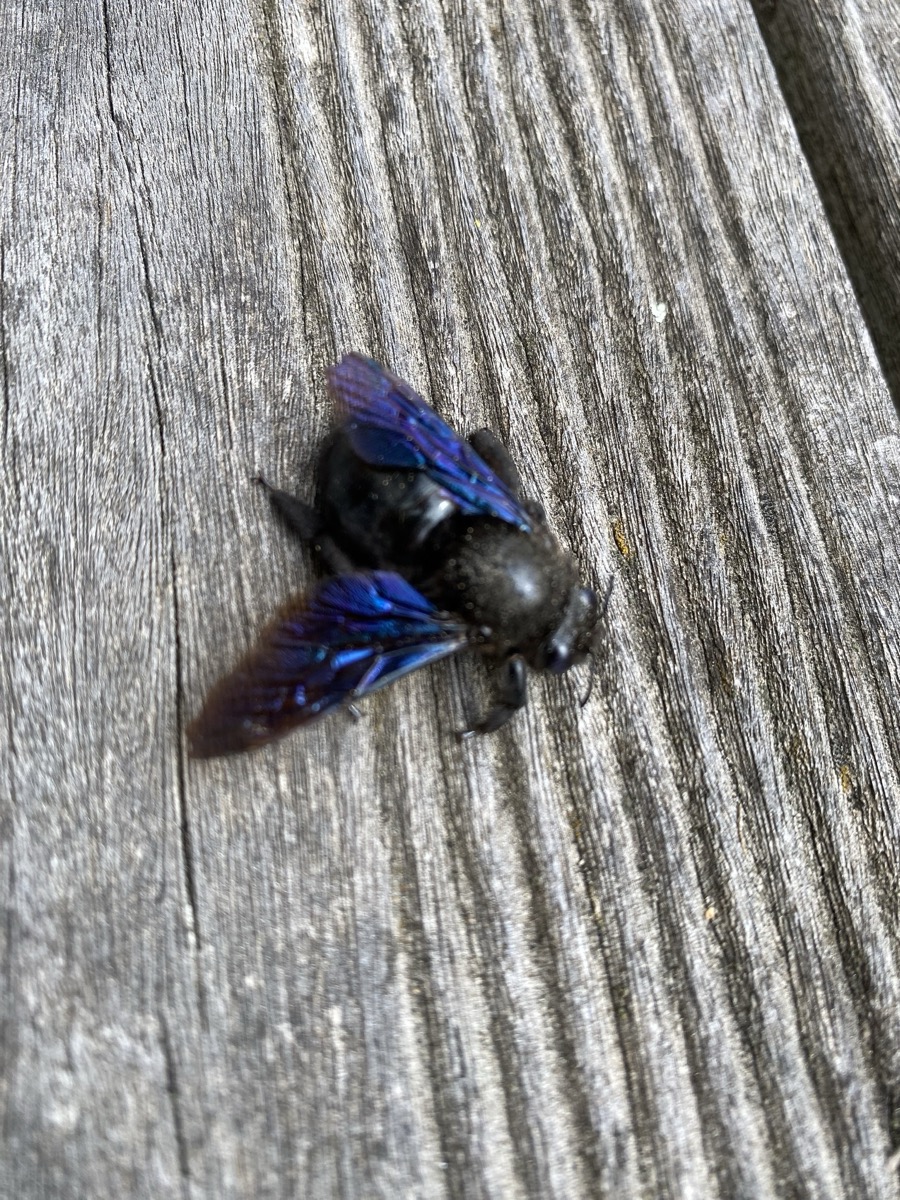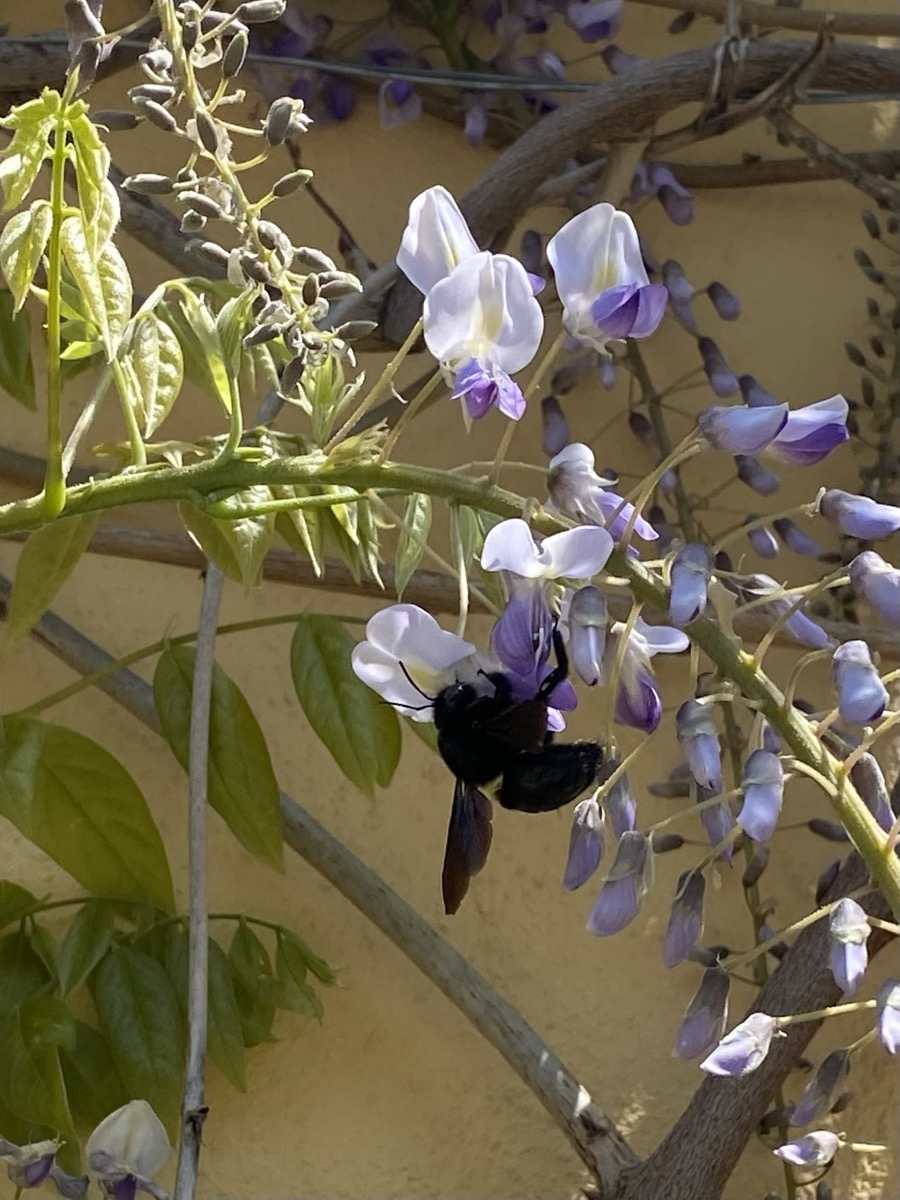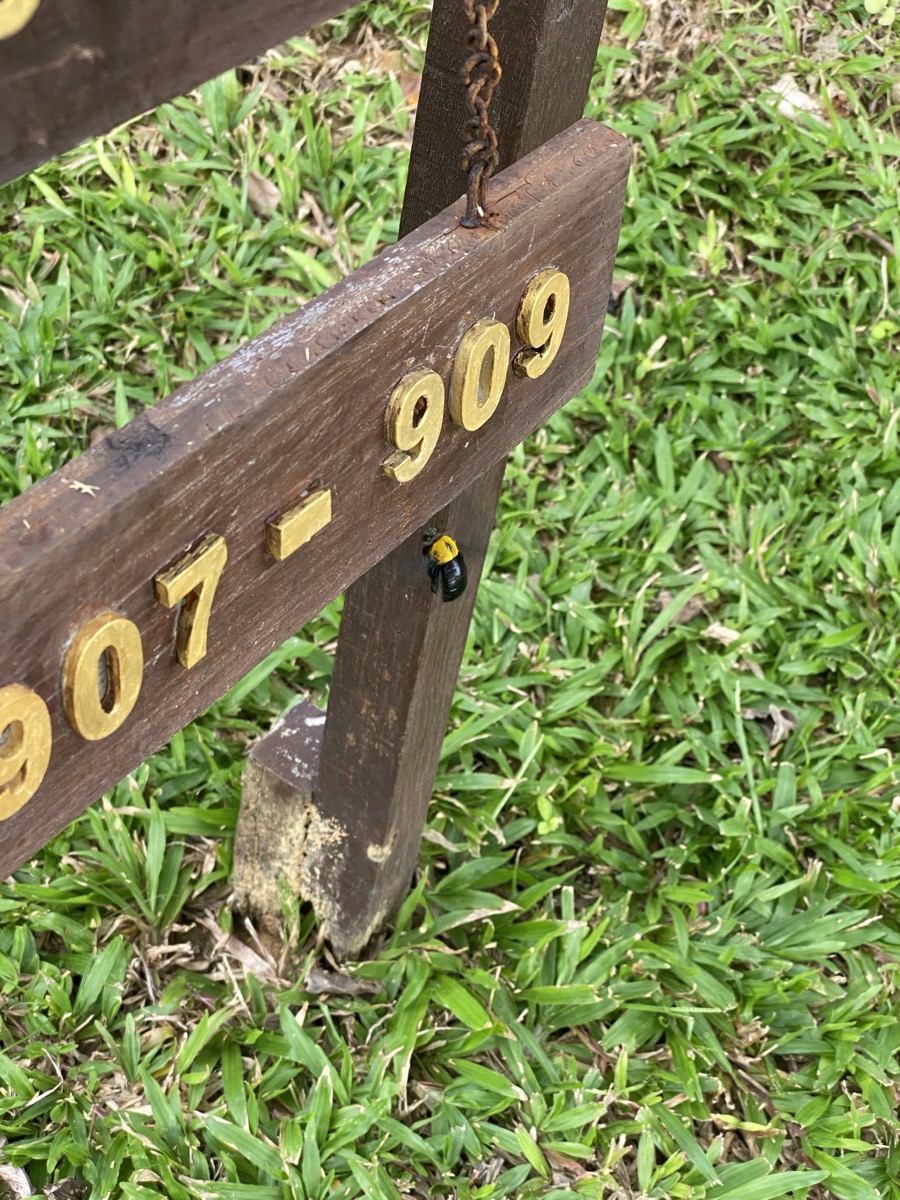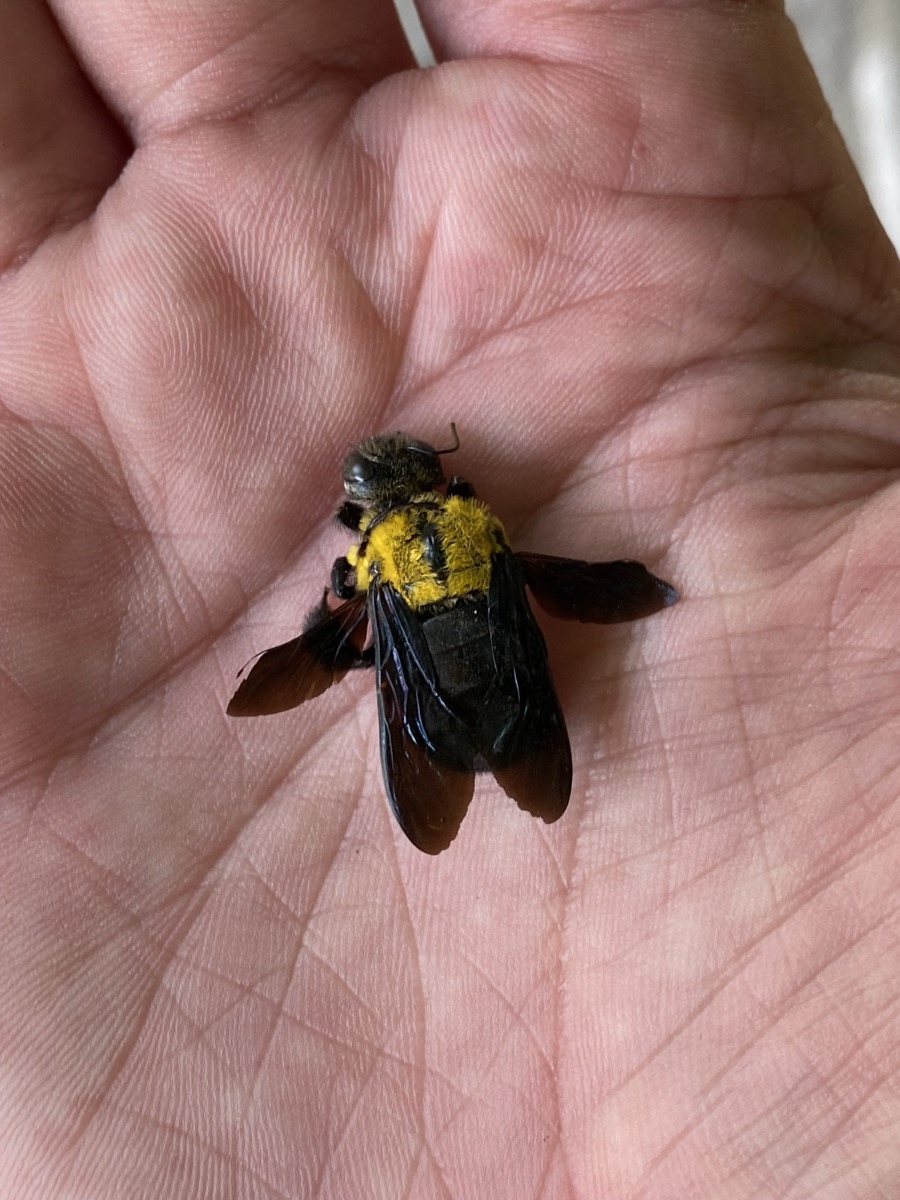Representative Genera
Some notable genera within the Apidae family:
- Apis – Honeybee (Apis mellifera), a social species widely used in beekeeping.
- Bombus – Bumblebees, stout-bodied, social or semi-social, highly effective pollinators.
- Xylocopa – Carpenter bees, large black solitary bees nesting in wood.
- Nomada – Parasitic bees (cleptoparasites), wasp-like appearance, do not collect pollen.
- Anthophora – Robust bees, often active in spring, fast and noisy flyers.
Habitat
Varies widely by genus:
- Gardens, flower-rich meadows, open forests
- Wooded areas for wood-nesting species
- Sandy soils or riverbanks for ground-nesting species
Biology
- Social organization:
- Apis and Bombus: social species
- Other genera: solitary or parasitic species
- Nesting:
- Natural cavities, wood, soil, hives (Apis)
- Sometimes collective nests in bumblebees
- Pollination:
- Highly important: many species are adapted to pollinate orchids, legumes, etc.
Notable Traits
- Frequent presence of corbicula (pollen baskets)
- Powerful, sometimes noisy flight (Xylocopa, Bombus)
- Varied floral adaptations, sometimes highly specialized
More than 5,700 species. The family includes solitary bees, parasitic and cleptoparasitic bees, as well as social ones. Notably includes honeybees.


